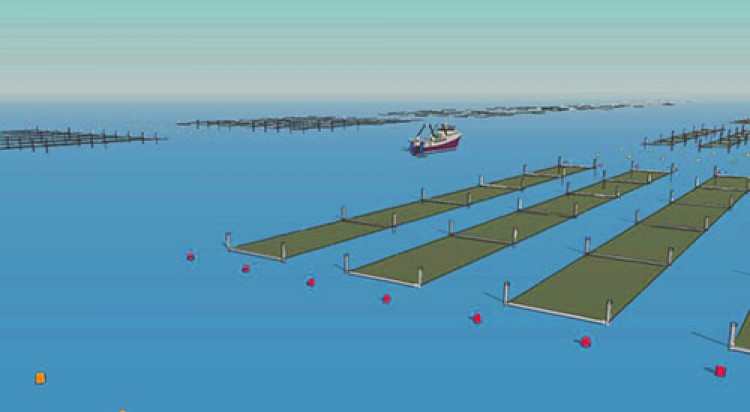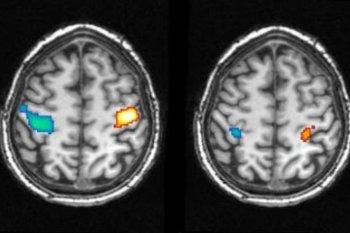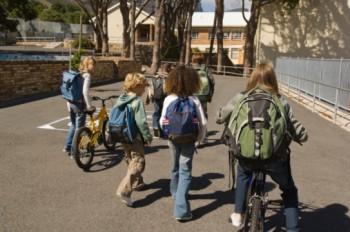Part of the solution for feeding a growing world population and maintaining an ecologically sound water purification facility—at the same time—is afloat in the Netherland’s Oosterschelde estuary.
A pilot seaweed farm, Europe’s first, was opened officially on July 7. And it’s not just a seaweed farm; researchers involved are dedicated to developing an environmentally friendly seaweed cultivation system.
“With large-scale seaweed cultivation, you can reduce the pressure on land and clean up the oceans,” Dr. Willem Brandenburg, who is part of the research team at Wageningen University and Research Center, said in the university’s magazine Resource.
The pilot project is the result of a contest organized by Rijkswaterstaat (RWS), the executive arm of the Dutch Ministry of Infrastructure and the Environment. RWS organized the contest to stimulate multifunctional spatial development initiatives for the waterways.
Crucial in the sustainability quest is the location of the farm. By placing seaweed farms in nutritious environments, the crops do not require any added fertilizers and will clean up the water. Rivers worldwide transport approximately 30 million tons of phosphates to the sea, and seaweed could absorb some of that naturally.
Or seaweed production could be used to environmentally upgrade fisheries. For example, Hortimare, part of the consortium involved in the pilot project, develops seaweed cultivars that are currently used as water purifiers in Norwegian salmon cultivation, according to a press release.
Antagonistic to the sustainable approach is Asian seaweed farming, which is detrimental to the environment. Currently, 90 percent of the world’s seven million tons of seaweed produced is grown there. Asian seaweed is grown with fertilizers. Most of the fertilizer drifts off into the sea.
“This massive overload of nutrients damages the coastal ecosystem,” Brandenburg said in Resource.
So how is the European low-input farm doing? The first results are promising. Three indigenous seaweed species—sea lettuce, oarweed, and seabelt—grow on ropes dangling underneath a modest-sized floating frame approximately 64 square meters (690 sq. ft.) in size. The Dutch seawater proves to be sufficiently nutritious and no fertilizer is needed.
To develop a low-input cultivation system, the study also aims to provide insight into optimizing environmental factors like temperature and light.
“Chlorophytes mainly absorb red light, and you can grow them high up the rope where there is enough red light,” said Brandenburg in Resource. “Brown and red algae absorb the green and blue light from the spectrum and that is exactly the light that penetrates deeper into the water, so these species do better further down the rope.”
The next questions are how to upscale the pilot in an environmentally healthy way, how to harvest and partially process the seaweed at sea, and how to innovate bio-refinery techniques and improve economic returns.
Brandenburg exclaims in a TV-interview: “What I envision are really big farms in a while, which might be many thousands of square kilometers big at locations where that is possible. Where there is place to partially process the seaweeds, where transport is taken into account ... The sea has enough energy, so I’m envisioning a whole new economy.”
And once the pilot farm is upgraded so that a region of the sea twice the size of Portugal would be covered in seaweed farms that produce fast-growing, high-quality protein crops, this then could provide the protein needed for the growing world population.
As an alternative to turning nature into arable lands or intensifying current land-based production systems, “we could double food production on land, so that we can still feed the world in 2050,” Brandenburg said in Resource.
“But then there will be a big problem for the elephants and pandas that we would also like to keep alive,” he added.
And will this mean that we will soon be looking at very interesting greens with our potatoes? Not necessarily. Seaweed is already part of our daily life. It’s in chocolate milk, ice cream, cosmetics, sauces, soups, toothpaste, food supplements, medicines, and so on.
Seaweed can also be processed into animal feed or ecological fertilizers, which could help relieve the growing shortage of phosphates for conventional agriculture. And it might be used in synthetic material or as biofuel as mentioned in the news story about the pilot farm aired on Dutch national television.






